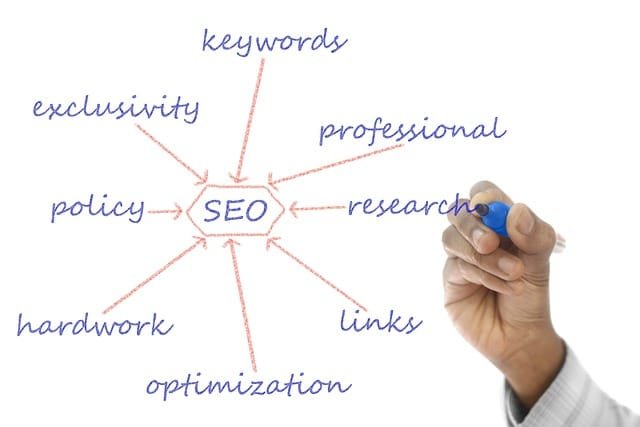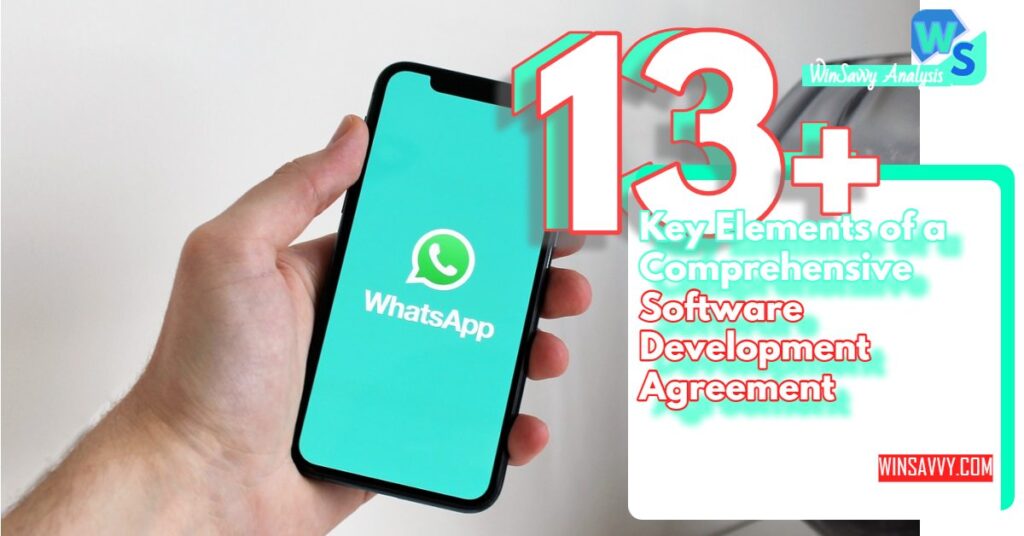In the realm of SEO, there’s a plethora of strategies and tactics that business leaders hear about daily. From keyword optimization to backlinking, it’s easy to get lost in the shuffle. However, amidst these techniques lies a powerful, often underutilized strategy: internal linking. It’s akin to the veins in our bodies, seamlessly connecting various organs and ensuring everything functions in harmony.
Imagine your website as a bustling city. Each webpage is a building, and the internal links are the roads connecting them. Without a well-laid network of roads, movement becomes chaotic, and reaching specific destinations becomes a challenge.
Similarly, without an efficient internal linking structure, both users and search engines may find it difficult to navigate and understand the hierarchy and relationship of pages on your site.
But what exactly is internal linking, and why does it hold such importance in SEO? Let’s unravel the mysteries.

Understanding the Basics of Internal Linking
At its core, internal linking refers to any link from one page of a domain to another page within the same domain. It’s akin to doors inside your house, letting you move from room to room. For example, when you link from a blog post on your website to your ‘contact’ page, that’s an internal link.
Differences between Internal, External, and Inbound Links
Internal Links: As mentioned, these are links that go from one page on a domain to a different page on the same domain.
External Links: These are links from one domain to a completely different domain. If you link from your blog post to an article on an industry-leading magazine, that’s an external link.
Inbound Links (or Backlinks): These are incoming links to your domain from other domains. Imagine another blogger mentioning your business in their article and linking to your site—that’s an inbound link.
The Role of Internal Links in SEO
Facilitating Website Navigation
Much like a well-organized library, internal links help users effortlessly navigate your website. It ensures they can move smoothly from general content to more specific content and vice-versa.
Improving Crawlability and Indexing
Search engines use spiders to crawl and index the vast expanse of the internet. With effective internal linking, you make their job easier. The easier they can crawl your site, the better they can index it, leading to potential improvements in search visibility.
Spreading Link Equity
Backlinks bring in link equity (or “link juice”) to your site. By using internal links strategically, you can spread this equity across various pages, enhancing the potential ranking power of each.

The Anatomy of an Effective Internal Link
Anchor Text and its Relevance
Anchor text is the clickable text of a hyperlink. It plays a vital role in providing context to both users and search engines. For instance, if you’re linking to a page about “SEO strategies,” your anchor text might be “effective SEO strategies” to provide clear context.
Follow vs. Nofollow Internal Links
By default, most internal links are “follow” links, meaning they pass link equity. Sometimes, for various reasons (like avoiding potential duplicate content issues), you might use “nofollow” links, instructing search engines not to follow or pass equity to the linked page.
Appropriate Link Placement
Not all internal links hold equal weight. Those placed within the main content of a page can be more valuable than links in footers or sidebars. Therefore, strategic placement is essential.
Strategic Approach to Internal Linking
Internal linking should not be done for the sake of it. There are key reasons and strategies behind it. Let’s start unravelling them one by one.
Building a Site Structure with Internal Links
The Concept of a Website Hierarchy
When creating a website, one doesn’t merely throw together a smattering of pages. Instead, a well-thought-out structure—akin to a tree with branches—ensures both users and search engines can navigate the site logically. At the top, you have the homepage, branching out to main categories, which further divide into subcategories and individual pages. Internal links serve as pathways guiding visitors through this hierarchy.
Using Cornerstone or Pillar Pages
Cornerstone or pillar pages are comprehensive, authoritative pages on a specific topic. They cover the subject in depth, acting as a primary hub. From these pages, you can link out to smaller, related articles (cluster content) that delve into specific nuances of the topic. This structure is beneficial for SEO because it organizes content in a manner that demonstrates topic authority.
Tips for Creating a Coherent and SEO-Friendly Site Structure
Prioritize Clarity: Ensure your site structure is easy for users to understand. The quicker they can find what they’re looking for, the better.
Limit the Number of Main Categories: Too many can overwhelm and confuse users. A clear, focused set of categories aids navigation.
Use Descriptive Labels: This isn’t just for users; it aids search engines in understanding the context and relevance of pages.

Contextual Internal Linking
The Importance of Relevancy in Internal Linking
Links should make sense within the context of the content. Linking just for the sake of it can confuse users. More importantly, search engines use the content surrounding a link to understand its context. Therefore, relevancy in internal linking is pivotal.
Strategies for Contextual Linking
Link to Deeper Pages: Often, the temptation is to link to top-level pages (like services or product pages). Instead, try linking to pages deep within your site that may not get as much exposure.
Consider User Journey: Think about the logical next step for a user reading a piece of content. Which article or page would offer them more value or further information? Link to that.
Learn all the strategies we use for effective internal linking.
Internal Linking for E-commerce Sites
Linking for Product Pages and Categories
Internal links are particularly vital for e-commerce sites. They guide users from general product categories to specific items. For instance, from a general “shoes” category, you might link to specific types like “running shoes” or “formal shoes.”
Best Practices for Linking in Product Descriptions
Link to Related Products: If a customer is looking at a summer dress, linking to matching summer sandals can be a logical and valuable choice.
Avoid Overlinking: Product descriptions should be clean and focused. Too many links can distract and overwhelm a potential buyer.
Using Internal Links to Improve User Engagement
Lowering Bounce Rate with Internal Links
A high bounce rate indicates visitors leave without exploring further pages. Thoughtfully placed internal links can intrigue and guide users to more of your content, thus potentially lowering bounce rates.
Encouraging Longer Session Durations with Strategic Linking
The longer a user stays on your site, the better it is for SEO and conversions. By offering them valuable internal links to further information or related topics, you can prolong their visit.
The Role of Internal Linking in Content Marketing
Linking in Blog Posts and Articles
Blog posts provide ample opportunities for internal linking. By referencing related articles or important sections on your site, you provide readers with a deeper dive into topics they’re already interested in.
Using Internal Linking to Promote Evergreen Content
Evergreen content remains relevant over time, but it can get buried as more content is published. By internally linking to it from newer posts, you can drive fresh traffic to these valuable pieces.

Common Mistakes and Best Practices in Internal Linking
Navigating the intricate maze of internal linking, even seasoned professionals can sometimes stumble. Let’s throw light on some of these pitfalls, ensuring you’re forewarned and thus forearmed.
Over-optimization of Anchor Text
While it’s essential to use descriptive anchor texts for your internal links, over-optimizing them with keyword-stuffed phrases can backfire. It not only makes the user experience clunky but can also raise red flags for search engines.
Best Practice: Use natural, topic-relevant anchor texts. It’s better to focus on the user’s understanding rather than trying to push specific keywords.
Overlinking or Excessive Linking
In your zeal to interconnect content, you might overdo internal linking. If every other sentence in your content has a link, it can disrupt the reading flow.
Best Practice: Link where it adds value. Ensure that each internal link provides further context or information to your reader.
Linking to No index Pages
No indexed pages tell search engines to ignore them. If you’re pushing link equity to these pages through internal linking, it’s akin to pouring water into a sieve.
Best Practice: Periodically review your internal links. Ensure they point to indexed, valuable pages that contribute to your site’s SEO and user experience.
Broken Internal Links
Links leading to 404 pages or content that has been moved or deleted can frustrate users and waste crawl budget.
Best Practice: Use tools (like Screaming Frog or Google Search Console) to periodically check for broken links on your website and fix them promptly.
Neglecting Valuable Pages
Sometimes, valuable pages that should be getting internal link love are left in the cold. This could be because they’re older or perhaps just overlooked.
Best Practice: Audit your content regularly. Look for high-quality content that can be linked to from newer pages or posts.
Internal Linking Best Practices
To wrap this section up, here’s a concise list of best practices for internal linking:
- User First, SEO Second: Always prioritize the user experience. If a link doesn’t add value to the reader, reconsider its placement.
- Use Descriptive Anchor Texts: Ensure that the linked text (anchor text) is relevant to the destination page.
- Maintain a Balance: While it’s essential to link internally, avoid stuffing your content with links. Aim for a balanced approach.
- Regular Audits: Periodically check your internal links for any issues or opportunities. As your site grows, your linking strategy should evolve accordingly.

Tools and Techniques for Effective Internal Linking
Internal linking is a pivotal component of a website’s SEO strategy. It plays a crucial role in spreading link equity, improving page authority, and enhancing user navigation. The strategic placement of internal links can lead to better crawlability by search engines and an improved user experience. But how do you optimize internal linking? Here’s an in-depth dive into the tools and techniques you can leverage:
SEO Tools for Internal Linking Analysis
Google Search Console
Overview:
Google Search Console (GSC) is a free service offered by Google that helps site owners monitor, maintain, and troubleshoot their site’s presence in Google Search results. It is instrumental in understanding the internal linking structure of a site.
Features:
Within GSC, the ‘Internal Links’ report provides details on which pages on your site are most linked by other internal pages. It helps identify the pages that are considered valuable within your website’s architecture.
Pros and Cons:
Being a free tool directly from Google, GSC provides accurate and reliable data. It’s easy to use and essential for any webmaster. However, its insights into internal linking might be basic for more advanced users looking for detailed data.
Pricing:
Google Search Console is free to use.
USPs:
GSC offers direct insights from Google regarding how the search engine views your site’s internal linking.
Screaming Frog
Overview:
Screaming Frog’s SEO Spider is a favorite among SEO professionals. It is a website crawler that allows you to crawl websites’ URLs and fetch key onsite elements to analyze from an SEO perspective.
Features:
For internal linking, SEO Spider lists out all internal links, their status codes, anchor texts, and more. It provides a visual representation of your site’s internal linking through force-directed diagrams.
Pros and Cons:
Screaming Frog offers a depth of data, making it invaluable for detailed site audits. Its ability to identify broken links, redirects, and orphaned pages helps streamline the internal linking process. However, its user interface might be overwhelming for beginners, and the free version has its limitations.
Pricing:
There’s a free version with limited features. The paid version costs £149.00 per year.
USPs:
Screaming Frog is comprehensive, offering insights beyond just internal linking. Its visual representation of internal link distribution is particularly beneficial.
Ahrefs
Ahrefs is known predominantly as a backlink analysis tool, but its suite offers a range of features including a comprehensive site audit tool that’s beneficial for internal linking analysis.
Features:
The site audit tool crawls all pages of a website, offering insights into internal and external links, performance, and more. Its internal linking report offers detailed insights into link distribution, anchor text usage, and identifies linking opportunities.
Pros and Cons:
Ahrefs offers data in a user-friendly dashboard and provides actionable insights. However, it is on the pricier side, which might deter smaller businesses or individual bloggers.
Pricing:
Plans start at $99/month.
USPs:
Ahrefs provides an integrated SEO platform with detailed insights into both off-page and on-page elements, including internal linking.
Moz Pro
Overview:
Moz Pro is an all-in-one SEO toolkit that offers a variety of functionalities, ranging from keyword research to link analysis. Its site audit feature, known as “Site Crawl”, provides insights into the website’s link structure.
Features:
Moz’s Site Crawl analyzes your site’s internal and external linking structure. It points out issues like broken links, redirects, and pages with no inbound links, making it easier for webmasters to enhance the user experience and search engine visibility.
Pros and Cons:
Moz Pro’s data is presented in a clear, digestible manner which is excellent for both beginners and advanced users. However, compared to tools like Ahrefs, some users believe its backlink database to be less expansive.
Pricing:
Plans start at $99/month.
USPs:
Moz’s strength lies in its user-friendly interface, coupled with a robust learning center and community, making it not just a tool, but an SEO ecosystem.
SEMrush
Overview:
A favored tool in the SEO community, SEMrush isn’t just for competitor analysis. It offers an extensive suite of functionalities, including site auditing capabilities that tackle internal linking.
Features:
SEMrush’s site audit tool scans a site’s health and provides insights into errors, warnings, and notices. This includes internal linking issues, such as broken links, orphaned pages, and more.
Pros and Cons:
SEMrush is comprehensive and offers a wealth of data on many SEO facets. However, its breadth can make it slightly overwhelming for new users.
Pricing:
Prices start from $119.95/month.
USPs:
SEMrush is a holistic tool that not only provides internal linking insights but also integrates with other tools to give you an all-around view of your site’s SEO status.
Link Whisper
Overview:
Link Whisper is a WordPress plugin built to simplify the process of managing and adding internal links within your content.
Features:
Link Whisper offers smart internal link recommendations as you write, making the process intuitive. It also provides reports on which pages have few or no internal links, helping you optimize your site structure.
Pros and Cons:
For those using WordPress, Link Whisper is a godsend due to its ease of use and automation. However, it’s restricted to WordPress users, limiting its appeal.
Pricing:
Starting from $77/year.
USPs:
Link Whisper’s strength is its seamless WordPress integration, making internal linking a breeze without leaving the content editor.
DeepCrawl
Overview:
DeepCrawl is a cloud-based website crawler that provides insights to help webmasters and SEOs in enhancing their site’s performance, health, and visibility.
Features:
DeepCrawl analyses your site architecture, ensuring internal links are correctly set up. It also identifies orphan pages, broken links, and provides visualization tools for your site structure.
Pros and Cons:
DeepCrawl’s insights are detailed, making it a favorite for large enterprises. It’s quite robust, but that also means it might be overkill for smaller websites.
Pricing:
Quoted based on the user’s requirements.
USPs:
Its deep-diving capabilities, combined with intuitive visualizations, make DeepCrawl an excellent tool for those in need of detailed site architecture insights.
Yoast SEO
Overview:
Primarily known for its on-page SEO recommendations, the Yoast SEO plugin for WordPress also touches upon internal linking, aiding users in enhancing their site’s navigational structure.
Features:
Yoast SEO’s premium version offers internal link suggestions while you create content. Additionally, it also provides an internal linking block to help structure content more effectively.
Pros and Cons:
Being WordPress-centric, Yoast SEO is incredibly user-friendly for WP users. But it doesn’t provide as in-depth internal link analysis as some other tools.
Pricing:
The Premium version, which includes internal linking features, starts at $89 for one site.
USPs:
As one of the most popular WordPress SEO plugins, Yoast SEO makes basic SEO and internal linking enhancements accessible even to the least tech-savvy users.
Techniques for Identifying Internal Linking Opportunities
- Content Audit: Periodically review your content to spot opportunities to link to newer articles or pages. This not only boosts the new page but rejuvenates older content.
- Contextual Relevance: The best internal links are those that are contextually relevant. If an article touches on a topic covered more extensively elsewhere on your site, that’s a prime linking opportunity.
- Anchor Text Selection: Use descriptive anchor texts that naturally fit into the content. This improves user experience and tells search engines about the linked page’s content.
- Use Breadcrumbs: Breadcrumbs are navigational aids that help users trace their path from the page they’re on back to the homepage. They’re great for internal linking and improve user navigation.
How to Fix Broken Internal Links
- Identify Broken Links: Tools like Screaming Frog and SEMRush can identify broken internal links. These are links that point to pages that no longer exist or have been moved without a proper redirect.
- Redirect if Necessary: If a page has moved, ensure that there’s a 301 redirect from the old URL to the new one. This ensures that any link equity from the old page gets transferred to the new one.
- Replace or Remove: For broken links that cannot be redirected (e.g., if the content no longer exists and there’s no suitable replacement), either replace the link with a relevant, existing page or remove the link altogether.
- Regular Monitoring: Broken internal links can creep in without notice, especially on large, dynamic sites. Regularly schedule internal link checks to ensure that your site remains free of them.
Internal Linking Analysis Tools:
1. Ahrefs’ Site Audit Tool
- Overview: Known for its backlink analysis, Ahrefs also offers a comprehensive site audit tool.
- Features: Ahrefs detects broken links, highlights link distribution, and even points out orphan pages.
- Pricing: Plans start from $99/month.
2. Moz Pro’s Site Crawl
- Overview: Moz Pro offers a site crawl feature that audits your website, looking for issues and offering actionable insights.
- Features: Spot internal redirect chains, broken links, and get insights into page link structures.
- Pricing: Packages begin from $99/month.
3. Link Whisper
- Overview: A WordPress plugin designed specifically for internal linking.
- Features: Suggests internal linking opportunities as you write or edit content and provides reports on your site’s internal link structure.
- Pricing: Starting at $77/year.
4. Yoast SEO Premium
- Overview: The premium version of the renowned WordPress SEO plugin.
- Features: Apart from SEO analysis, it offers internal linking suggestions and checks for orphaned content.
- Pricing: $89 for a single site license.
Wrapping it up
Internal linking is more than just an SEO best practice; it’s the digital tapestry that holds your website together. With every link, you’re guiding your users, telling search engines about your content’s hierarchy, and distributing link equity throughout your website.
Consider this: every time a user or search engine bot lands on your site, they’re embarking on a journey. Your internal links are the road signs, the pathways, the interconnected avenues that ensure this journey is smooth, enjoyable, and rewarding.
Remember, as with any other strategy, there’s no ‘set it and forget it’ here. Your internal linking strategy must evolve with your content and business goals. Keep auditing, keep refining, and most importantly, keep your user at the center of your efforts.
In the vast ocean of SEO, internal linking might seem like just one fish. But it’s a fish that, if understood and utilized correctly, can make waves of difference.
Now that we’ve delved deep into the significance and strategies surrounding internal linking, it’s time for action. Equip yourself with the tools, soak in the knowledge, and embark on the rewarding journey of optimizing your site’s internal linking structure.
Read Next:
- The Ultimate Guide to Guest Posting
- Link Building for SEO: Introduction, Benefits and Strategies
- Use These Apps to Destroy your Procrastination
- What is Domain Authority (DA) and How You Can Increase It?
- Hey There: Read this If You Are A New Visitor






















Comments are closed.